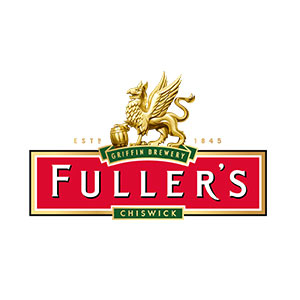With the notable and welcome exception of Chelmsford, the growth in numbers of racecourses in the UK has been one-way traffic in the wrong direction over the past 80 years. Since the outbreak of World War II in 1939, at least 16 racecourses have disappeared, leading to anomalies like the Lincoln Handicap being run at Doncaster. and the Triumph Hurdle at Cheltenham. A majority of these closures have been among small Jumps tracks, despite crowds well in excess of what comparable courses receive now.
The Victorian era spawned a profusion of racecourse developments, some of which were short-lived, others brought to a close by the Great War. However, there were still plenty more racecourses open in the inter-war period, before Point-to-Point and National Hunt racing administration diverged. In fact, many of the racecourses closed post war have re-invented themselves under the leadership of Point-to-Point hunt committees, many on the original sites, like Cottenham.
Sadly, however, even this century, British racecourses continue to disappear, Towcester being the most recent in 2019. Having sold most of its best fixtures to the Arena Racing Company, it ceased to be viable as a going concern. In 2012, the same Arena closed Hereford and Folkestone together in a cost-saving measure. Whilst Hereford has re-opened after a renegotiation of the lease with the City Council, ultimate owners of the course, Folkestone looks likely to join a long list of racecourses to be redeveloped as housing, that includes Hurst Park (1962), Derby (1939), Newport (1948) and Bromford Bridge (1965).

Whilst many decry the modest audiences for racing at some of our courses now, the olden days were clearly not so halcyon. Without revenue from betting, from media rights or sponsorship and client entertainment, and reliant upon admission revenue alone, the finances of racing made little sense for a post-war generation in the austerity of the late forties and fifties, and many fell prey to a growing housing boom as developers saw opportunities in city location green field sites.
Gatwick (1940) closed to become a marshalling location for British troops and ordinance and never re-opened; Derby, home to the National Hunt Chase no less than five times, was not granted permission by the local council to re-open in 1942 after closing at the outset of the war; Colwall Park in Herefordshire, still home to a purpose-built hotel designed around its racing clientele, never got momentum back after the war, as was the case at Tarporley.
But the 1960s was another defining moment in the history of British racecourses. The advent of the Levy Board in 1964 to administer the levy on bookmaking shops made legal that year, forced key decisions as to which racecourses to support. Those left out in the cold had little option but to close, faced with more competitive prizes offered by their luckier brethren who'd made the cut. If not immediate, a steady stream of courses disappeared from 1963-81.
Woore Racecourse, in north Shropshire, first raced in 1883, with a sharp left-handed course of just 1 mile circumference. A simple wooden grandstand sufficed to manage crowds, and its best days were the inter-war years, when even George VI attended to see his horse win a race. The course closed in 1963, the same year as Manchester, where despite running steeplechases since 1872 (and Flat racing long before that), the lure of monies for housing development was too much to refuse.
The mid sixties saw the demise of Hurst Park in '62, Lincoln and Lewes in '64, and Bromford Bridge and Bogside in '65. The course near Hampton Court Palace, proved very popular, with races like the Victoria Cup (now at Ascot) and Triumph Hurdle invented to promote a growing spectator audience. Nevertheless, the racecourse company had been set up to make a profit, and when developers came knocking, the Board sold out. The turf was sold to Ascot to create a National Hunt course there.
Lincoln became a dual purpose course in 1843 when staging National Hunt races for the first time, and several Grand National winners contested the grandly titled Lincolnshire Steeplechase in 1846. When it didn't receive support from ther Levy Board in '63, the resultant closure was inevitable. Races like the Lincoln Handicap and Brocklesby were transferred to Doncaster.
Visitors to Lewes can still see the old racecourse laid out on Black Cap Hill, where former trainer Gerry Enright trained in the eighties. A thriving Flat course that attracted Derby candidates, with multi-day Festival meetings, it was a victim of the obligation to deliver mid-week racing to betting shops and when attendances declined in the late fifties and sixties, its loss was little lamented by racegoers who had lost touch with its Sussex charms.
Bromford Bridge's flat track was the nearest to the city centre in Birmingham, and thrived as a result, before developers swallowed it up to house the city's growing population. Bogside, on the banks of the River Irvine 15 miles from Ayr, recorded racing from 1808, and took on the West of Scotland Steeplechase in 1867, precursor to the Scottish Grand National. The National Hunt Chase was held here in 1876 and again in 1890. However, Bogside was another of the courses not to make the cut in the Levy Board selection and closed in 1965.
Flat courses, Wye in Kent disappeared in 1975, Lanark through financial mismanagement in 1977, and Alexandra Palace 7 years earlier in 1970, whilst Stockton, sometimes known as Teesside, capitulated in 1981. It was a rarity in operating throughout the Second World War, avoiding the need for northern trainers to travel to Newmarket in an era of rationing. Sadly, not very long after Stockton's demise, racecourse finances were improved dramatically, when Satellite Information Services, a company part-owned by the racecourses, was set up to transmit the first TV pictures to betting shops, generating the first media rights revenues for racecourses, and a gamechanger in terms of their viability.

However, as if to prove that nothing ever stays the same, the Jockey Club mooted an idea to close Kempton Park 4 years ago, in order to reinvest in Sandown and a new All-Weather track at Newmarket. JCR has been in the rearguard of adopting All-Weather racing, still with only a single course to its name in this growing genre. Happy to say, the idea went down like a lead balloon, rasing the hackles of National Hunt worthies like Nicky Henderson, whose father Johnnie had set up the original Racecourse Holdings Triust to save racecourses. The repetition of this message by opponents to the scheme seemed to find its mark, although in the present climate, it wouldn't be a great surprise if the idea was brought back into consideration. It's an irony that with a single day exception, Kempton, whilst loved by professionals for its fair course and well-drained soil, is largely unloved by spectators.
All is not lost however. Enthusiasts of the sport continue to create new courses even if these are mere Point-to-Point fixtures. Spectators from the turn of the century would find more in common with these rural locations I suspect than with the metroplitan courses, which goes to show there is room for all sorts in the sport.







